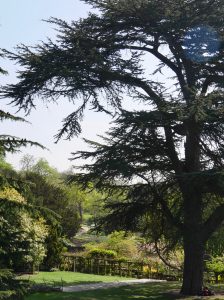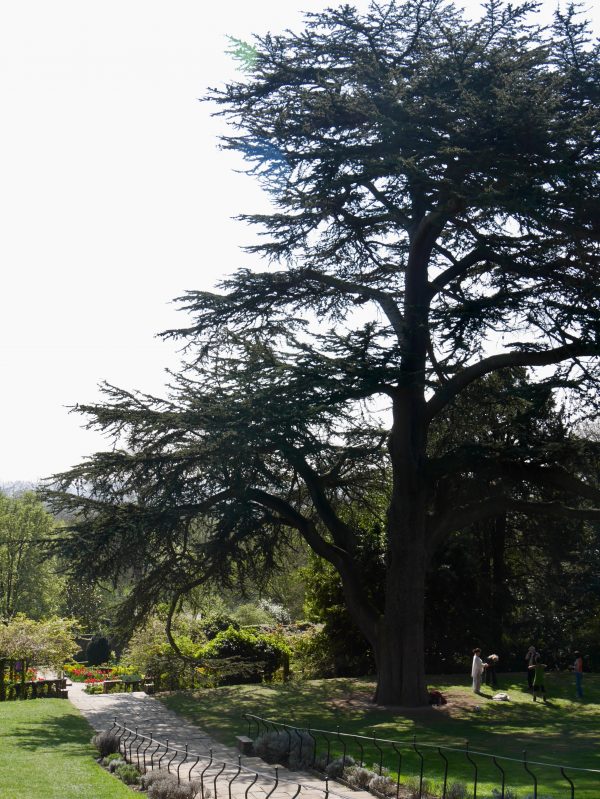Unusual or exotic trees : the Cedar of Lebanon (Cedrus libani)

The Cedar of Lebanon (Cedrus libani) is widely planted as an ornamental tree in parks and the gardens of stately homes. However, it is native to the mountains of the Eastern Mediterranean. These trees were used by the Phoenicians in the building of their ships, used in the construction of Solomon’s Temple in Jerusalem and the tree’s resin was used by the Egyptians in the process of mummification. Cedar wood is valued for its durability, grain, colour and fragrance; it is also a source of cedria (cedar resin) and cedrum (cedar essential oil).
In its native lands (of Lebanon, Syria and Turkey), the trees experience warm, dry summers and cool, moist winters (precipitation 39 -59 inches); at higher altitudes the trees are blanketed by snow at times. However, global warming / climate change is affecting the pattern of rainfall and snow cover in these regions; they experience shorter winters and less snow cover. This is, in turn, altering the natural regeneration of the Cedars. Not only are the cedars affected but insects become more active and their life cycle speeds up.
This is certainly true for Cephalcia tannourinensis - a defoliating insect of Cedars. The combined effects of changing climate and the ravages of insects leave the Cedars weakened and susceptible to disease. The Cedars in Lebanon are now protected by law as centuries of deforestation have reduced the original Cedar forests from 500,000 hectares to 2,000 hectares.
The Cedar of Lebanon is an impressive, stately tree that can reach a height of 120 feet. The trunk, covered with a rough and scaly bark, can be 8 feet in diameter. The branches take on a wide, spreading, horizontal habit. The leaves are needle-like and arranged in spirals on the shoots. The trees grow most rapidly in the first 50 years, slowing significantly after 70 years - they take some 40 years before they flower / produce cones. Some Cedar trees are reputed to be hundreds of years old, possibly thousands.

Cedar in a local park
Comments are closed for this post.
Discussion
A beautiful, enormous cedar has been felled in the town of Battle.in a front lawn.
This wonderful majestic tree is no longer. Would the council have had to give permission for this to be felled???
We have a cedar about 35 years old,it has produced male cone shaped flowers in the spring but never any female cones. However, this autumn there were more apparent male cone shaped conics approximately 1 1/2” tall but again no female cones. Hopefully next spring we might be lucky.

Might interest
https://friendsoftheearth.uk/nature/how-protect-trees-guide-tree-preservation-orders
blogs
23 June, 2023